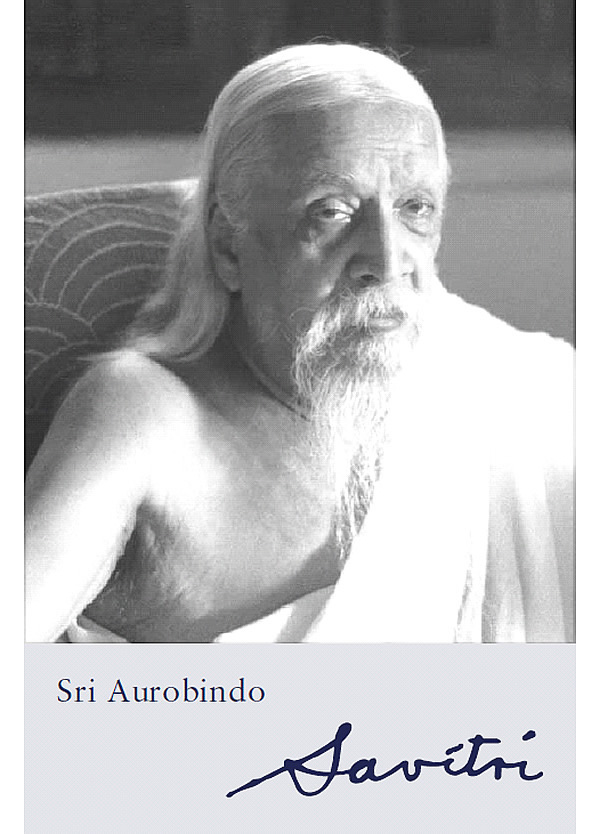Savitri
a Legend and a Symbol
CONTENTS
|
PART ONE |
||
|
Book One |
||
|
The Book of Beginnings |
||
|
Canto I |
||
|
Canto II |
||
|
Canto III |
||
|
Canto IV |
||
|
Canto V |
||
|
The Yoga of the King: The Yoga of the Spirit's Freedom and Greatness |
||
|
Book Two |
||
|
The Book of the Traveller of the Worlds |
||
|
Canto I |
||
|
Canto II |
||
|
Canto III |
||
|
Canto IV |
||
|
Canto V |
||
|
Canto VI |
||
|
Canto VII |
||
|
Canto VIII |
||
|
The World of Falsehood, the Mother of Evil and the Sons of Darkness |
||
|
Canto IX |
||
|
Canto X |
||
|
Canto XI |
||
|
Canto XII |
||
|
Canto XIII |
||
|
Canto XIV |
||
|
Canto XV |
||
|
Book Three |
||
|
The Book of the Divine Mother |
||
|
Canto I |
||
|
Canto II |
||
|
Canto III |
||
|
Canto IV |
||
|
PART TWO |
||
|
Book Four |
||
|
The Book of Birth and Quest |
||
|
Canto I |
||
|
Canto II |
||
|
Canto III |
||
|
Canto IV |
||
|
Book Five |
||
|
The Book of Love |
||
|
Canto I |
||
|
Canto II |
||
|
Canto III |
||
|
Book Six |
||
|
The Book of Fate |
||
|
Canto I |
||
|
Canto II |
||
|
Book Seven |
||
|
The Book of Yoga |
||
|
Canto I |
||
|
The Joy of Union; the Ordeal of the Foreknowledge of Death and the Heart's Grief and Pain |
||
|
Canto II |
||
|
Canto III |
||
|
Canto IV |
||
|
Canto V |
||
|
Canto VI |
||
|
Canto VII |
||
|
The Discovery of the Cosmic Spirit and the Cosmic Consciousness |
||
|
Book Eight |
||
|
The Book of Death |
||
|
"Canto III" |
||
|
PART THREE |
||
|
Book Nine |
||
|
The Book of Eternal Night |
||
|
Canto I |
||
|
Canto II |
||
|
Book Ten |
||
|
The Book of the Double Twilight |
||
|
Canto I |
||
|
Canto II |
||
|
Canto III |
||
|
Canto IV |
||
|
Book Eleven |
||
|
The Book of Everlasting Day |
||
|
Canto I |
||
|
The Eternal Day: The Soul's Choice and the Supreme Consummation |
||
|
Book Twelve |
||
|
Epilogue |
||
|
VOLUMES 33 and 34 THE COMPLETE WORKS OF SRI AUROBINDO © Sri Aurobindo Ashram Trust 1997 Published by Sri Aurobindo Ashram Publication Department Printed at Sri Aurobindo Ashram Press, Pondicherry PRINTED IN INDIA
Savitri a Legend and a Symbol
Publisher's Note
The writing of Savitri extended over much of the later part of Sri Aurobindo's life. The earliest known manuscript is dated 1916. The original narrative poem was recast several times in the first phase of composition. By around 1930, Sri Aurobindo had begun to turn it into an epic with a larger scope and deeper significance. Transformed into "A Legend and a Symbol", Savitri became his major literary work which he continued to expand and perfect until his last days. In the late 1940s, when his eyesight was failing, he took the help of a scribe and dictated the extensive final stages of revision. Separate cantos started to appear in print in 1946. Part One of the first edition was published in 1950. The next year, after Sri Aurobindo's passing, the rest of the poem was brought out in a second volume. In the second edition (1954), Sri Aurobindo's letters on Savitri were added. They are omitted from the present edition and included in Letters on Poetry and Art. The present text is that of the fourth ("revised") edition which came out in 1993. Each line has been checked to eliminate any unintentional discrepancies between the final manuscript or dictation and the printed form of the poem. |
